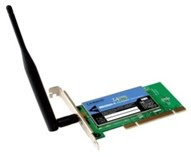WIRELESS TRANSMISSION MEDIA SUCH AS INFRARED, RADIO WAVE AND SATELLITE..
Wireless Technology
In a wireless media however, signal transmission is unguided and the device communicates without using wires between nodes, usually by relying on radio frequencies instead.

INFRARED
- Infrared is a wireless transmission medium that sends signals using infrared light waves. Infrared is used in devices such as the mouse, wireless keyboard and printers. Some manufacturers provide a special port called the IrDA port that allows a wireless keyboard to communicate with a PC. Infrared signals have frequencies between 300 GHz to 400 THz.
RADIO WAVE
- Radio waves are a type of electromagnetic radiation with wavelengths in the electromagnetic spectrum longer than infrared light. When an antenna transmits radio waves, they are propagated in all directions. This means that the sending and receiving antennas do not have to be aligned. Our AM and FM radio stations, cordless phones and televisions are examples of multicasting.

SATELLITE
- Satellite is an object which has been placed into orbit by human endeavor. A communication satellite is a space station that receives microwave signals from an earth-based station, amplifies (strengthen) the signals, and broadcasts the signals back over a wide area to any number of earth-based stations.










